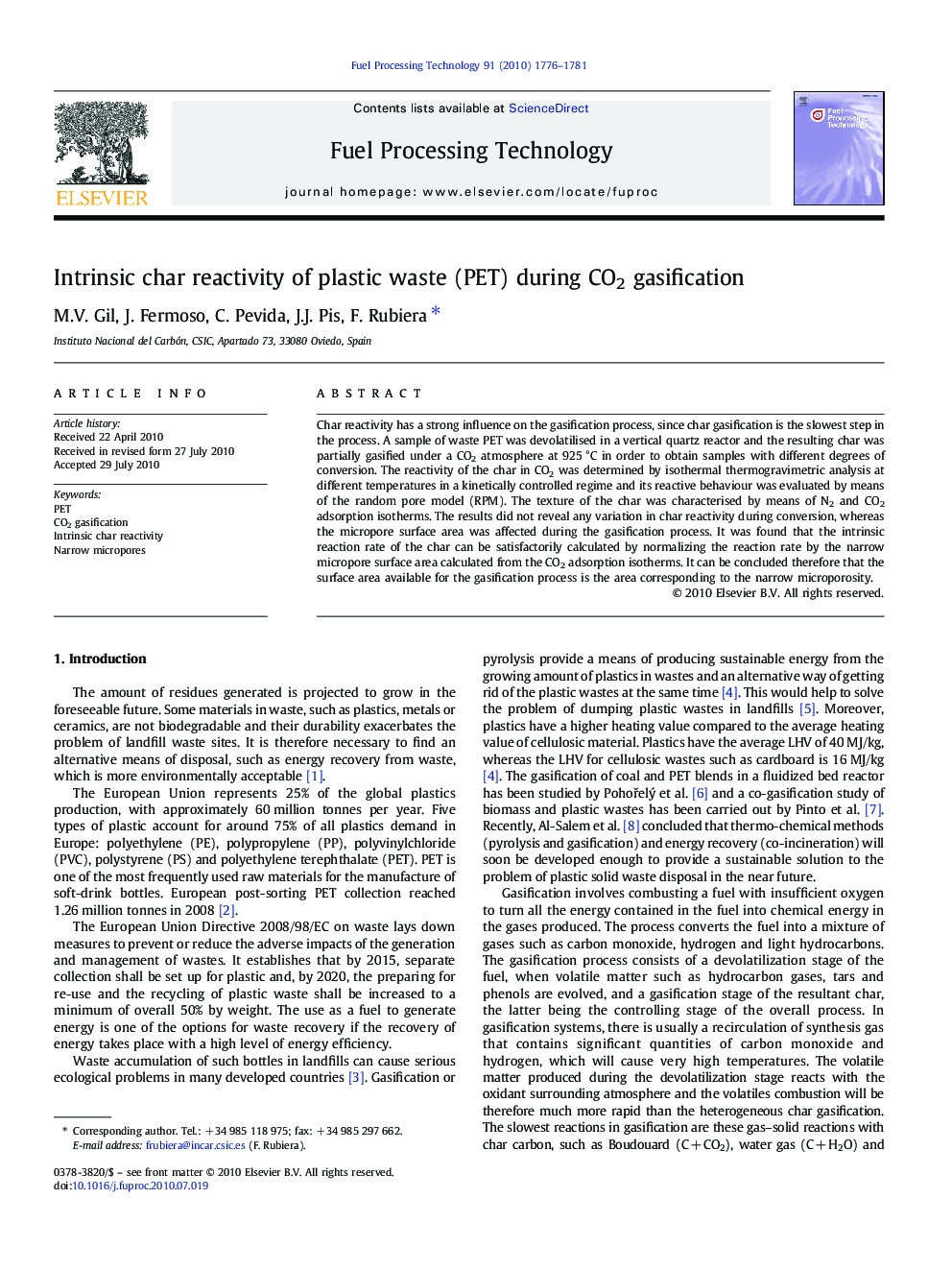| Article ID | Journal | Published Year | Pages | File Type |
|---|---|---|---|---|
| 210670 | Fuel Processing Technology | 2010 | 6 Pages |
Char reactivity has a strong influence on the gasification process, since char gasification is the slowest step in the process. A sample of waste PET was devolatilised in a vertical quartz reactor and the resulting char was partially gasified under a CO2 atmosphere at 925 °C in order to obtain samples with different degrees of conversion. The reactivity of the char in CO2 was determined by isothermal thermogravimetric analysis at different temperatures in a kinetically controlled regime and its reactive behaviour was evaluated by means of the random pore model (RPM). The texture of the char was characterised by means of N2 and CO2 adsorption isotherms. The results did not reveal any variation in char reactivity during conversion, whereas the micropore surface area was affected during the gasification process. It was found that the intrinsic reaction rate of the char can be satisfactorily calculated by normalizing the reaction rate by the narrow micropore surface area calculated from the CO2 adsorption isotherms. It can be concluded therefore that the surface area available for the gasification process is the area corresponding to the narrow microporosity.
